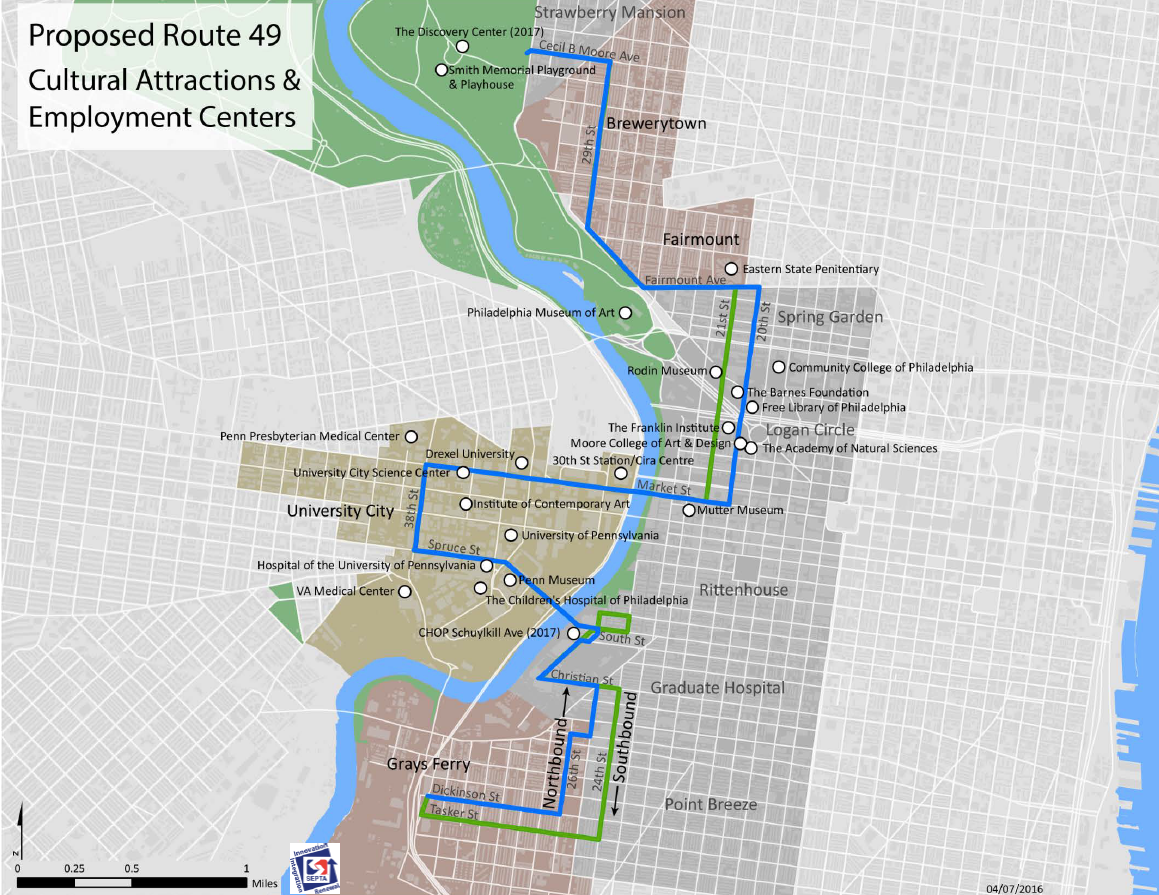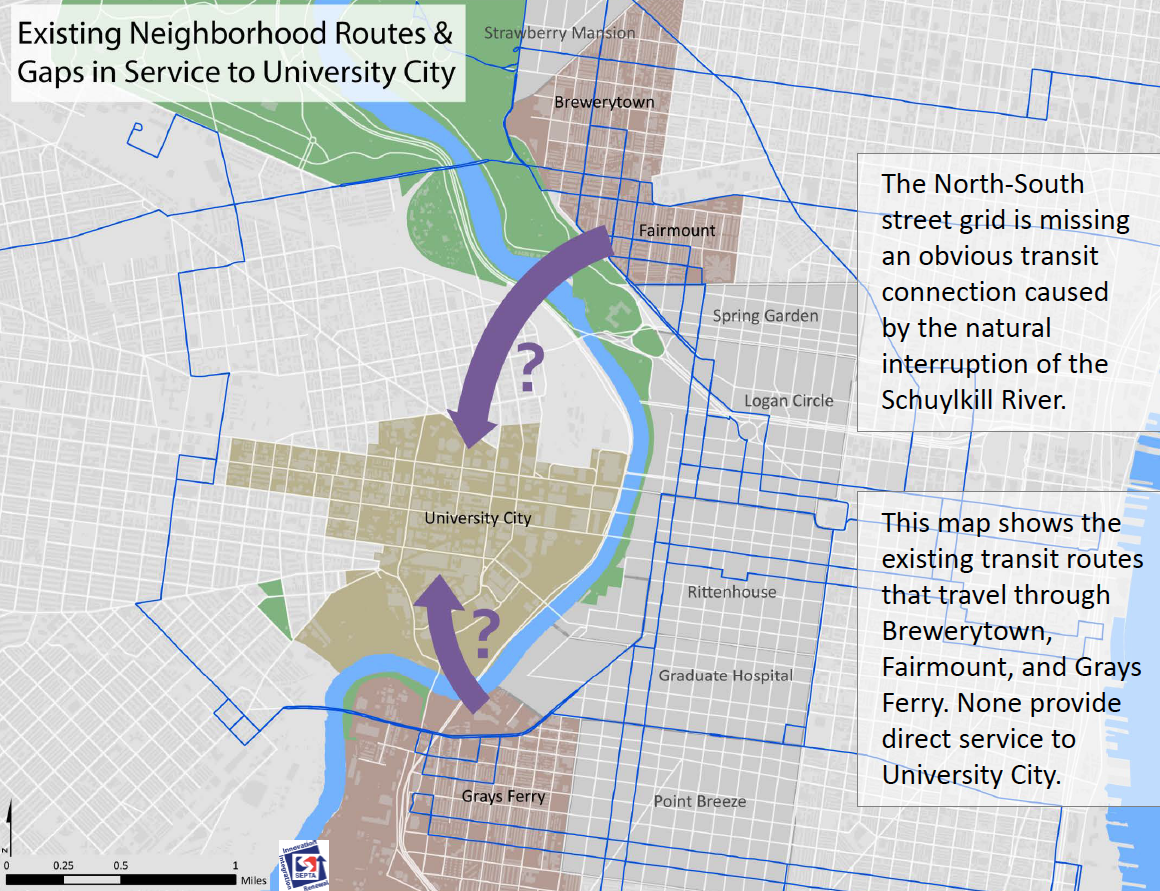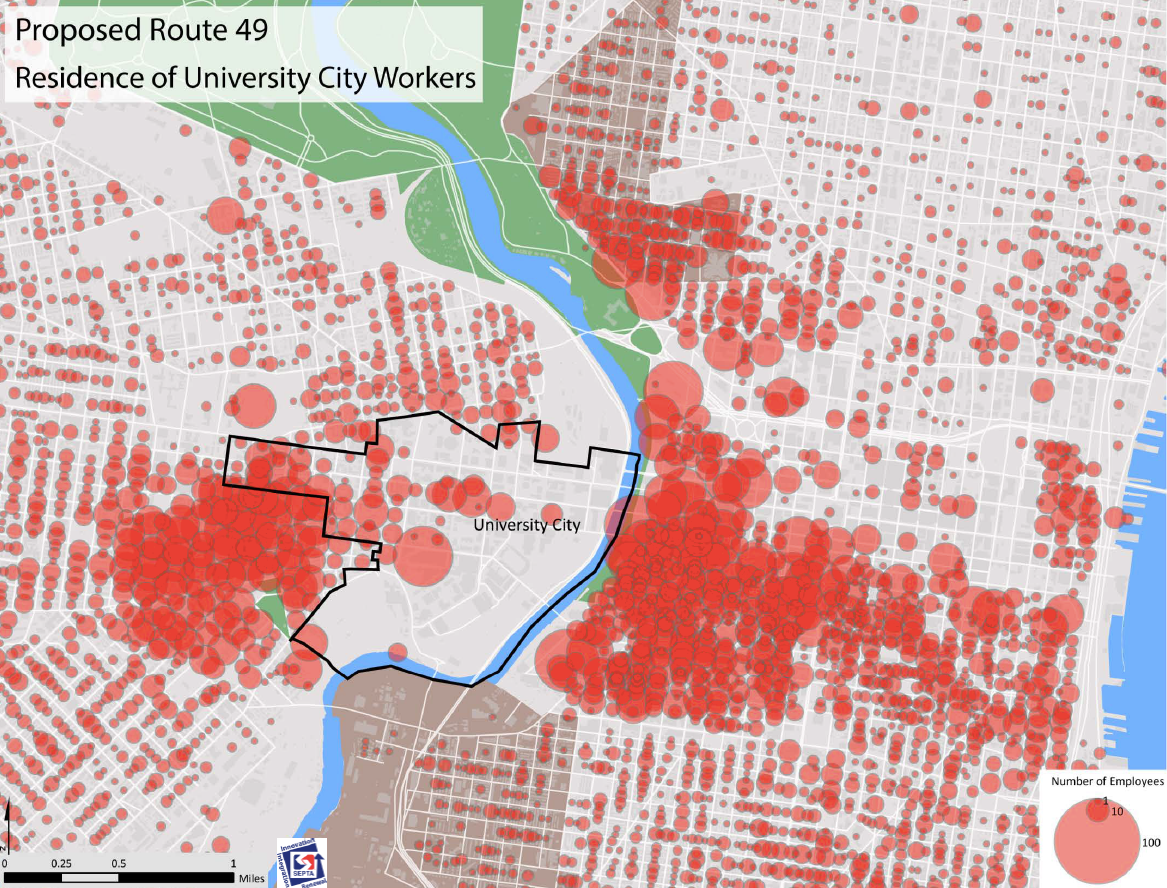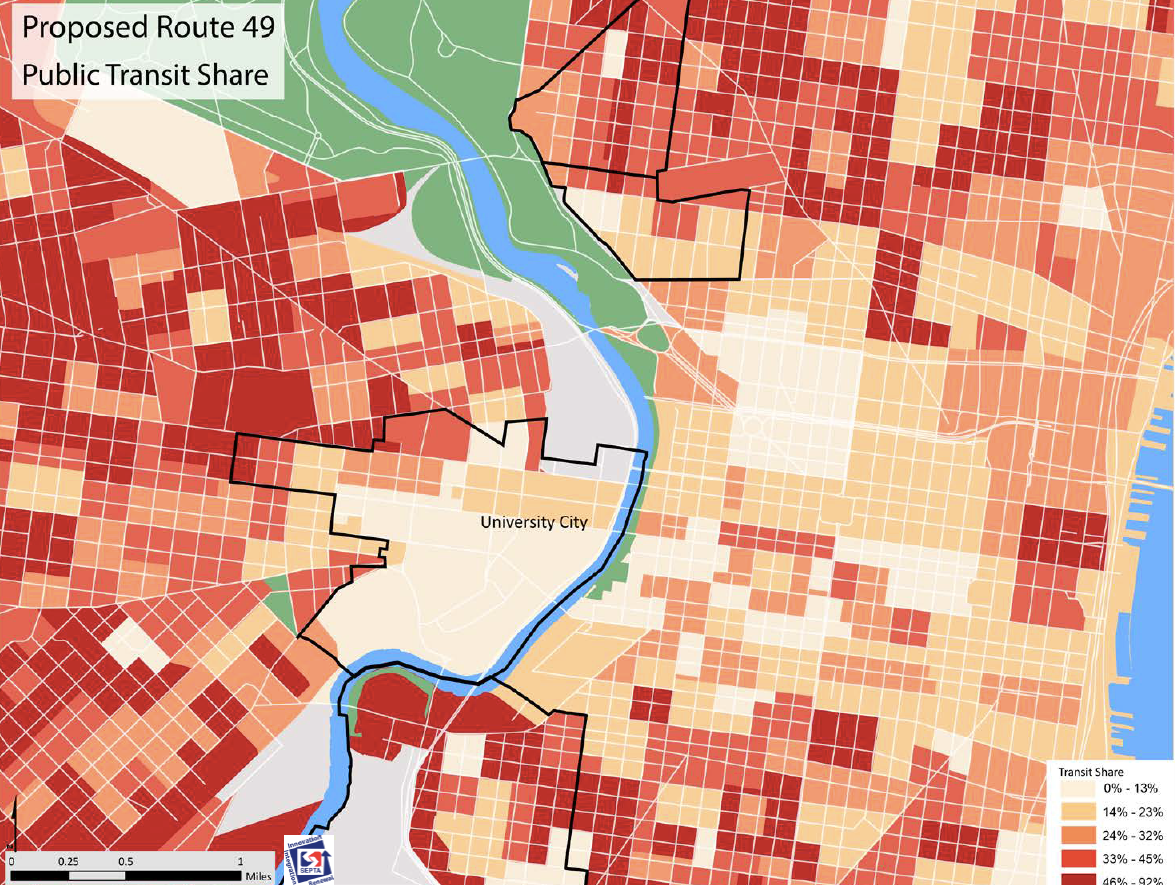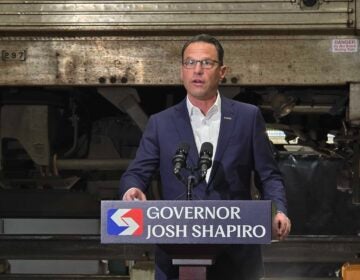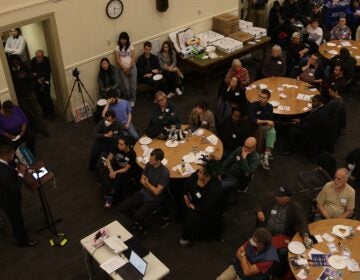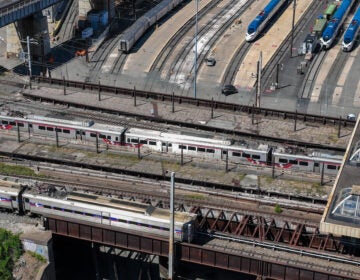SEPTA previews new bus route to link University City with Brewerytown, Fairmount and Grays Ferry
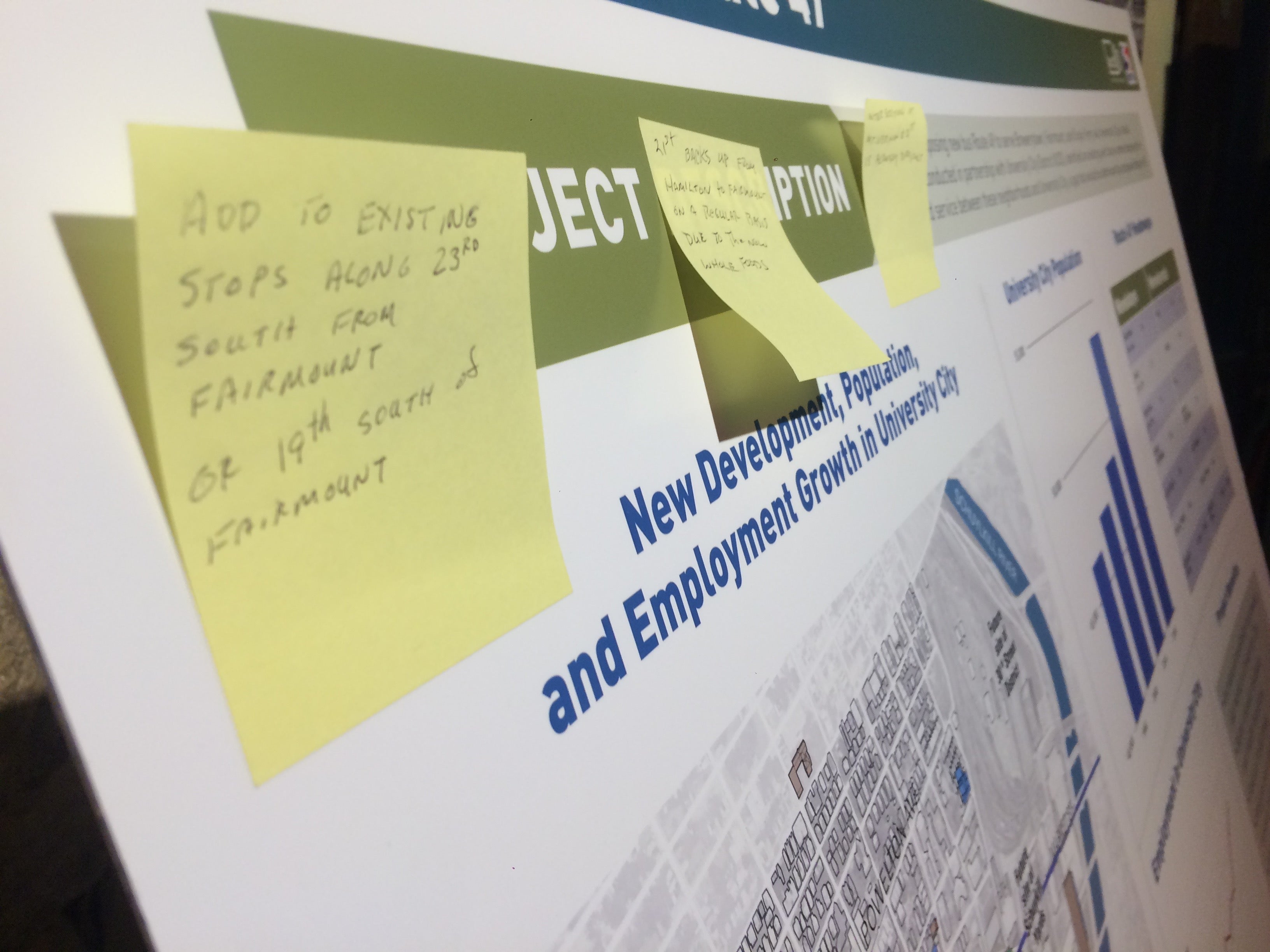
Bathrooms. It always begins and ends with bathrooms.
A SEPTA bus route, that is—they all must have a bathroom at the end of the route for drivers to use during their short breaks between runs. So explained Anita Davidson, a SEPTA operations planner, when asked at Tuesday’s open house on the new bus Route 49 why the proposed route couldn’t make more of a loop in Gray’s Ferry.
That could work, Davidson explained patiently, if the bus made such a loop mid-route, but not towards the end, where SEPTA needs a good spot in the urban jungle for when nature calls. Bathrooms that are open during the route’s 5 a.m. to 2 a.m. schedule are rare commodities, and they constrain options.
With Route 49, SEPTA proposes to offer one-seat rides through University City from Brewerytown and Fairmount in the north, to Grays Ferry and Point Breeze in the south. Right now, transit riders need to transfer or walk to get across the Schuylkill River to Philadelphia’s second largest employment hub. SEPTA anticipates the new route will begin running sometime this fall or early next spring. Tuesday’s open house was aimed at getting more community feedback on the bus’s specific route.
The buses will run every 15 minutes during rush hour and 20 minutes off-peak during the week. On the weekends, buses will run every 20-30 minutes.
Fifty or so residents braved the light spring drizzle and listened to a brief presentation before SEPTA’s representatives asked them to play back-seat planner. Most were enthusiastic supporters of the proposal, but there were some concerns.
“I like the idea of service connecting us to West Philadelphia,” said Nancy Dudak, who lives on 21st and North Streets. “But my opposition I wanted to voice tonight is the 21st Street piece of the route.”
Dudak admitted her opposition was partially because she didn’t like the idea of loud buses going down her street, but also noted that traffic on 21st Street can already be an issue—a concern echoed by Geni Klein, who lives in The Philadelphian on Pennsylvania Avenue. Dudak suggested 19th or 23rd Street as alternatives for the route.
Straighter routes mean faster buses, said Davidson. 21st Street is the only straight shot past the Benjamin Franklin Parkway and then over Market Street, where it turns to cross the Schuylkill into University City. 23rd Street stops at Pennsylvania Avenue; 19th Street runs into Logan Square. Sending the bus over the Spring Garden Street Bridge instead of the Market Street Bridge would frustrate the proposal’s secondary purpose: linking 30th Street Station to the cultural attractions on the Parkway, which no other bus currently does.
According to Census data reviewed by PlanPhilly, around 23 percent of commuters in Fairmount and Brewerytown take transit to work, compared to 26 percent in Philadelphia as a whole. SEPTA’s block-by-block analysis showed even lower ridership numbers along the proposed route. Given the large number of residents there who work in University City, SEPTA hopes a decent chunk of drivers will trade in their keys for a SEPTA Key once the Route 49 starts running. Such a passenger increase would make the route economically sustainable and could help alleviate traffic.
After it crosses the South Street Bridge on its southern run, Route 49 takes a dizzying loop of left turns in order to head down Schuylkill Avenue. But there’s a method to this madness. The turn off the bridge onto Schuylkill is too tight for SEPTA’s 40-foot buses; turning down 23rd Street to head down Grays Ferry Avenue instead also isn’t an option, as utility poles close to the street make that turn too tight as well; turning down 21st Street would bring the route further east than desired, making it longer and ultimately slower than the set of lefts.
The proposed route gets within a few blocks of the University of Pennsylvania’s new foray in Grays Ferry, the Pennovation Center, which aims to be a hub of startup companies. But located on the northwest corner of Grays Ferry Avenue and 34th Street, the Pennovation Center will remain outside of the quarter-mile or so used as a rule of thumb for areas “serviced” by a bus route. Why not send the 49 through the maze of medical buildings and over the University Avenue Bridge instead of South Street? That would slow the bus down significantly, Davidson.
That’ll be a loss for the Pennovation Center, which remains cut off by river and roadway from both Penn’s campus and the rest of the city. MANNA was considering a space at the Pennovation Center, said Ann Hoskins-Brown, the nonprofit’s director of policy and institutional affairs, but the lack of bus routes turned them off. “One of our main concerns was volunteers—we have over 100 volunteers every day,” said Hoskins-Brown. “So we were looking for access for our volunteers and… the 64 and the 12 [bus routes] weren’t enough.”
Hoskins-Brown attended the meeting as a resident—she lives on the corner of Christian and 24th, right where the proposed bus would turn. That “makes me very unhappy about this because my steps will be the bus stop.”
Like others in attendance who were concerned about the idea of living on a bus route, Hoskins-Brown’s NIMBYism only goes so far. “There’s some element of city living, but still….” Her hope: SEPTA tweaks the route, not cancel it.
WHYY is your source for fact-based, in-depth journalism and information. As a nonprofit organization, we rely on financial support from readers like you. Please give today.



